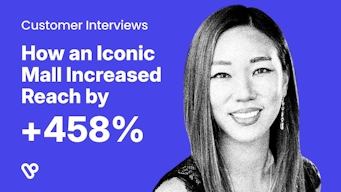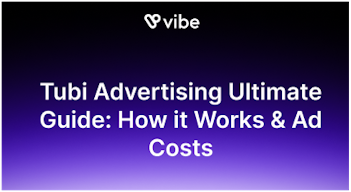B2B Demand Generation Marketing
B2B marketers are increasingly under the gun to produce the innovative, viral, and performance-focused campaigns the public expects from B2C companies, but longer sales cycles and niche target audiences pose a real challenge. Add to that the entrenched strategies of a notoriously risk-averse industry, and B2B marketers are left with lackluster demand generation campaigns and imprecise down funnel strategies.
A clever mix of existing channel mix optimization and targeted new media tests, however, is energizing the sector.
B2B Demand Generation Today
What is B2B Demand Generation?
Demand generation - driving awareness and interest in your offering - is crucial to any business, but especially so in a B2B context where 70% of buyers purchase from brands and organizations they were familiar with before even beginning their research.
Demand generation includes every customer touchpoint from general awareness to education to initial contact. It’s based on the understanding that most of your audience isn’t ready to buy yet and need clear communication, not only around your services, but around the issues your services solve in general.
B2B marketers are usually well-versed in demand capture, the part of demand generation that involves interacting with the 5% of their market already looking for a solution (usually with PPC, review sites, or content marketing campaigns), but struggle with demand creation which entails more nebulous, longer term efforts to educate prospects who aren’t actively looking for a solution. This is where recent digital innovation can make the most impact and mitigate recent headwinds.
Demand Generation Trends and Challenges
Over the past few years, B2B marketers across sectors have had to contend with everything from supply chain disruption to digital signal loss to rapidly evolving media consumption habits. Some challenges, like an overall distrust of innovation, are evergreen, while others, like massive signal loss due to increasingly stringent privacy regulations, are new and urgent. Either way, B2B sales and marketing teams need to identify which of these challenges to prioritize to ensure their long-term strategies yield actionable results.
Signal loss
When Apple first introduced its ATT (App Tracking Transparency) framework in 2021, developers and mobile marketers weren’t the only ones to lose a massive amount of targeting ability. Marketers leveraging social media data - across sectors - were blindsided when the 80% of social media users who exclusively used the apps on mobile were no longer targetable and CPMs shot through the roof. Today, ATT panic has somewhat subsided, but 3rd party cookie deprecation and new privacy compliance regulations in almost half of all US states mean B2B marketers eager to reach highly valuable, niche audiences will need to rethink how they deploy their demand generation strategies across channels.
A different way of buying
A perennial challenge B2B marketers are all too familiar with is dealing with cash-strapped, risk-averse prospects who tend to limit exposure by working with companies they already know about, even before researching a specific issue. In a study conducted by The Drum last year, B2B marketers typically began their search with only three brands in mind, expanded their search to about 10 for due diligence, but almost always returned back to those original three by the end and ended up working with one of them.
This is where good old fashioned brand awareness comes into play, despite its nebulous KPIs and frivolous reputation (as opposed to “performance marketing”). Because of the “rule of three” outlined above, brand awareness is critical for organizations that are not already on buyers’ minds.
The study went on to find that “while size and market share dictate the three brands they start with, brand awareness dictates which seven are then added for consideration – in fact, brands in the initial consideration set are three times as likely to end up being purchased than those that aren’t. Creative campaigns are 12 times more efficient at delivering business success.” This is where innovative digital channels will especially come into play, but more on that later.
Shrinking training and bandwidth
In a recent industry survey following the post-COVID “great resignation,” 60% of marketing leaders reported a lack of adequate digital marketing training and challenge as one of their top marketing challenges. While programmatic buying solutions have been available across many channels for a while now, some B2B marketers balk at what they still think of as too scattershot of an approach for their targeted needs. What’s important in this case, however, is not to focus on the methodology but on the data being used.
Too often, siloed marketing departments will create compelling content without optimizing its impact because they don’t have the necessary data or tools to properly customize and deploy it. Relevant communication is at the heart of any good marketing strategy, but it’s especially important when targeting risk-averse buyers about to make a large purchase. B2B marketers looking to differentiate themselves need to focus on tools that can target and track results while reliably automating as many processes as possible.
B2B Demand Generation Best Practices
Demand Generation Channels
Leverage your CRM
Experienced B2B marketers know that an up-to-date CRM (Customer Relationship Management) tool with a strong pipeline is indispensable, especially since B2B customers typically take a much longer time to nurture than B2C ones. Again, proper data aggregation and use are key here. Benchmarks will vary by industry, but remember that CRM maintenance is not the exclusive purview of a motivated sales team.
Marketers should leverage custom journey automation as much as they can and continuously tweak triggers and touch points to optimize conversion. Testing may not always feel like the best use of one’s time or money, but it’s the only way to get (and stay) ahead of the competition, so don’t be shy! Most CRMs today have multivariate campaign features to test subject lines and CTAs, but also landing page formats, interactive content types, or promotions.
Make sure to leverage that valuable 1st party data across channels: social, Streaming TV, search, and more.
Paid Content
PayPer Click, display, and paid social ad campaigns are almost always part of B2B demand generation strategies because they are easily measurable, offer last touch attribution, and can provide substantial lead lists to the sales team, but are you making that data work for you on the backend?
Two of the most important ways marketers can optimize their paid ad campaigns are
- Consistent, measured testing
- Trackable, actionable touchpoints for every step in a prospect’s purchase journey.
That means every time a prospect interacts with your brand through a paid promotion, there needs to be a single, clear action for them to take with a robust response mechanism from your sales or marketing teams in order to maintain solid ROAS.
Native Content
More than ever, quality content is at an all-time premium. The advent of clumsy AI copy writing and the (mistaken) belief that poorly executed content works as long as a catchy title gets clicks have left professionals in search of real answers desperate for high quality resources. That’s great news for B2B marketers looking for differentiation opportunities! While quality content and SEO strategies do take time and resources, they can and should be used in modular formats that can apply to a wide variety of prospects and campaign types.
Social media posts, white papers, webinars, sponsored editorials, and podcasts can all revolve around a handful of brand pillars that are then recorded in a variety of mediums and lengths. A podcast can be recorded on camera and become several social media videos, which can then bcomee the basis of an editorial in an industry publication, etc.
More than any other sector, B2B buyers are looking for reassurance, expertise, and reliability. Putting enough resources behind quality content that can then work for your brand indefinitely is a cost worth incurring.
New Media
So far, we’ve established that
- Paid media is a cost of entry for any B2B marketer
- Native content is the only way to establish authority in a competitive industry,
but what about standing out from the competition when everyone already uses paid ads and SEO takes forever to pay off? That’s where innovations in digital media come in.
DOOH (Digital Out of Home) and CTV (Connected Television) ad formats have grown by leaps and bounds over the past few years, combining the wow factor of large, traditionally B2C formats with the granular targeting and measurement powers of digital.
DOOH: B2B marketers can now purchase DOOH ad placements programmatically to reach custom audience segments by geofencing relevant areas like business districts or event venues. Programmatic DOOH platforms like Hivestack or Vistar Media use historical mobile location data to activate relevant digital screens when there is a concentration of mobile devices detected in those set geofenced areas. This type of campaign, in combination with other digital screens, data-driven audience targeting, and precise measurement, can now become part of integrated omnichannel campaigns that will help B2B marketers stand out.
CTV: Connected Television advertising has grown faster than any other digital marketing channel since search ads were invented. Over 90% of US households now own a connected device and even the most premium subscription streaming services have begun offering ad-supported tiers. That means both customer reach and quality inventory have grown exponentially and significantly lowered barriers to entry for marketers new to television advertising.
Although TV advertising has long been recognized as one of the most premium (and expensive) advertising formats, B2B marketers typically didn’t want to invest in a channel with unmeasurable ROI. Now that streaming TV is viewed over the internet, however, marketers can target hundreds of audiences by profession, household income, location, age, and more, for as little as $18 per CPM (cost per 1000 impressions).
Optimize demand generation results
Balanced campaigns
B2B demand generation campaigns need to be balanced. That means having enough content and resources available from brand awareness all the way to lead nurture, but it also means the campaign’s tone should find a happy medium between authoritative and emotionally resonant. Make sure your campaigns involve high engagement mediums like TV or audio as well as longer form written content and strong paid calls to action.
Programmatic buying
One of the best ways to manage complex, multichannel campaigns is programmatic buying with trusted platforms. From social to display to billboards to TV, virtually all digital media is traded programmatically these days, saving precious time for content creation, testing, and channel diversification. Make sure to work with reputable platforms that allow your media buyers to measurably track and control your campaign audience, bidding strategy, budget, creative, and placement. It’s easy!
Integrated campaigns
Within each campaign, B2B marketers can deploy a variety of strategies to ensure demand generation turns to conversion:
- Create prospecting campaigns targeted to key audiences to create awareness
- Use your CRM data to run mid-funnel Account Based Marketing (highly customized for niche audiences) campaigns
- Leverage pixel data to retarget leads
All along the funnel, sales and marketing efforts will need to go hand in hand so a prospect can coherently navigate all assets and communications without ever feeling a shift in tone.
Measurement
Similarly, campaign outcomes should be measured with KPIs identified before launch, across channels and teams. That might mean measuring white paper downloads or unique web visitors for awareness, or CTR for email campaigns and cost per session for mid-funnel strategies, for example.
Regardless of your campaign goals or medium, testing and measuring need to become evergreen practices for your team in order to maintain solid demand generation over time.
Supercharge Demand Generation with CTV
While most marketers may not yet think of TV ads for demand generation in a B2B context, Connected TV advertising is quickly becoming the lynchpin of integrated demand generation strategies in need of channel diversification, especially in the B2B sector. It offers the precision targeting and real-time measurement essential to advertising your B2B business while engaging with audiences at a time your competitors probably aren’t: primetime.
CTV has 231 million viewers in the US alone and those viewers are among the wealthier and more educated demographics - often business stakeholders. After all, corporate decision makers are people too and they are raptly watching Yellowstone after dinner with the rest of us - that’s when you’ll want to serve your ad: when they are free of distractions, deeply engaged, and receptive to retain information.
A good CTV ad platform should also allow you to retarget your web visitors right on their TV screens (or tablets or phones), adding an emotionally resonant touchpoint to your nurture campaigns and fully integrating this new medium into your overall strategy. A recent study by Mobile Measurement Partner Adjust found that upwards of 25% of their clients’ conversions were assisted by CTV campaigns: it gave their other channels (display, social, etc.) the boost they needed to push prospects to convert.
The campaign set up couldn’t be simpler (or more familiar to digital advertisers): set a campaign timeline and budget, select target audiences from hundreds of options, upload video creative, and you’re ready for launch! Don’t worry, you probably already have every element you need for a video creative: leverage post-production to edit your most popular existing creative assets and repurpose them for the biggest screen in the house.
CTV for B2B Best Practices
While CTV advertising can support all types of campaigns, from awareness to performance to app installs, and multivariate campaign features allow marketers to test and customize their tactics, a few B2B best practices stand out:
- Invest in programmatic to maximize reach
- Leverage frequency capping - we recommend a 5 impressions per day per household cap
- Consistently A/B test your creative
- Leverage retargeting strategies early and often
- Focus on multichannel attribution to understand CTV's influence on total lead volume, changes in intent, sales velocity, and more
- Integrate your CTV platform with your Google Analytics dashboard
- Test strategy and creative for at least one month
- Leverage pixel tracking on all campaigns
- Create ads that align with the content they will play next to
- Align your retargeting campaigns with your CRM segments
Ultimately, a challenging economic context presents B2B marketers looking to boost their demand generation results with exciting opportunities to diversify and test their strategies in a bold new digital world. With the right platforms and a will to innovate, it’s time for B2B marketers to step into the spotlight!



